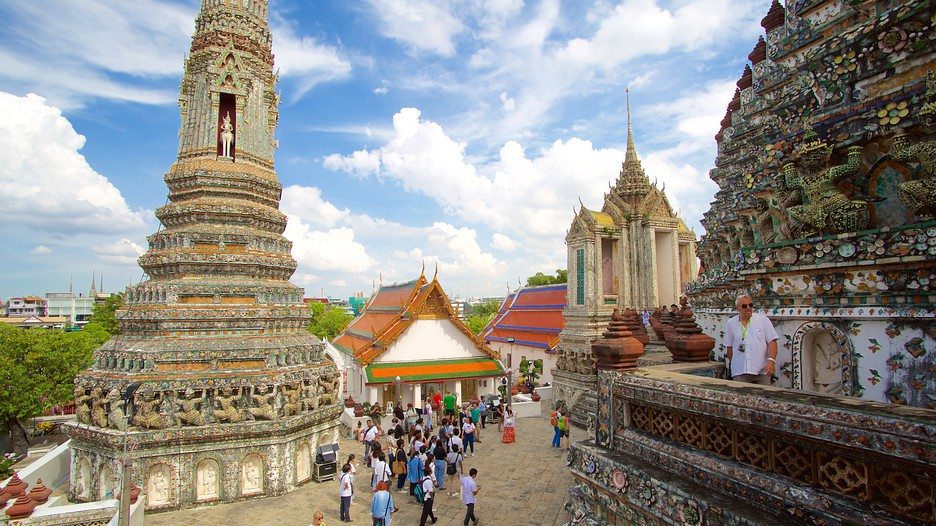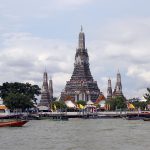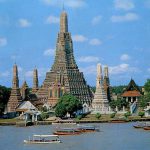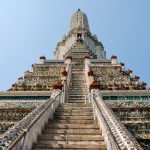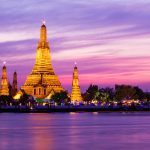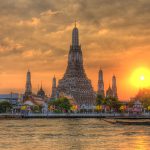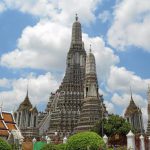Wat Arun was envisioned by King Taksin in 1768. It is believed that after fighting his way out of Ayutthaya, which was taken over by a Burmese army at the time, he arrived at this temple just as dawn was breaking. He later had the temple renovated and renamed it Wat Chaeng, the Temple of the Dawn. It used to be the home of the Emerald Buddha, before the capital and Palace was moved to the other side of the river. This can now be seen at the Grand Palace.
The central prang was extended during the reign of Rama III (between 1824 and 1851), and is now one of the most visited sites in Thailand. It was also Rama III who added the decoration of the spires with porcelain, so that they glimmer in the sunshine.
Wat Arun, locally known as Wat Chaeng, is situated on the west (Thonburi) bank of the Chao Phraya River. It is easily one of the most stunning temples in Bangkok, not only because of its riverside location, but also because the design is very different to the other temples you can visit in Bangkok. Wat Arun (or temple of the dawn) is partly made up of colourfully decorated spires and stands majestically over the water.
Wat Arun is almost directly opposite Wat Pho, so it is very easy to get to. From Sapphan Taksin boat pier you can take a river boat that stops at pier 8. From here a small shuttle boat takes you from one side of the river to the other for only 3 baht. Entry to the temple is 100 baht. The temple is open daily from 08:30 to 17:30.
Given beauty of the architecture and the fine craftsmanship it is not surprising that Wat Arun is considered by many as one of the most beautiful temples in Thailand. The spire (prang) on the bank of Chao Phraya River is one of Bangkok’s world-famous landmarks. It has an imposing spire over 70 metres high, beautifully decorated with tiny pieces of coloured glass and Chinese porcelain placed delicately into intricate patterns.

